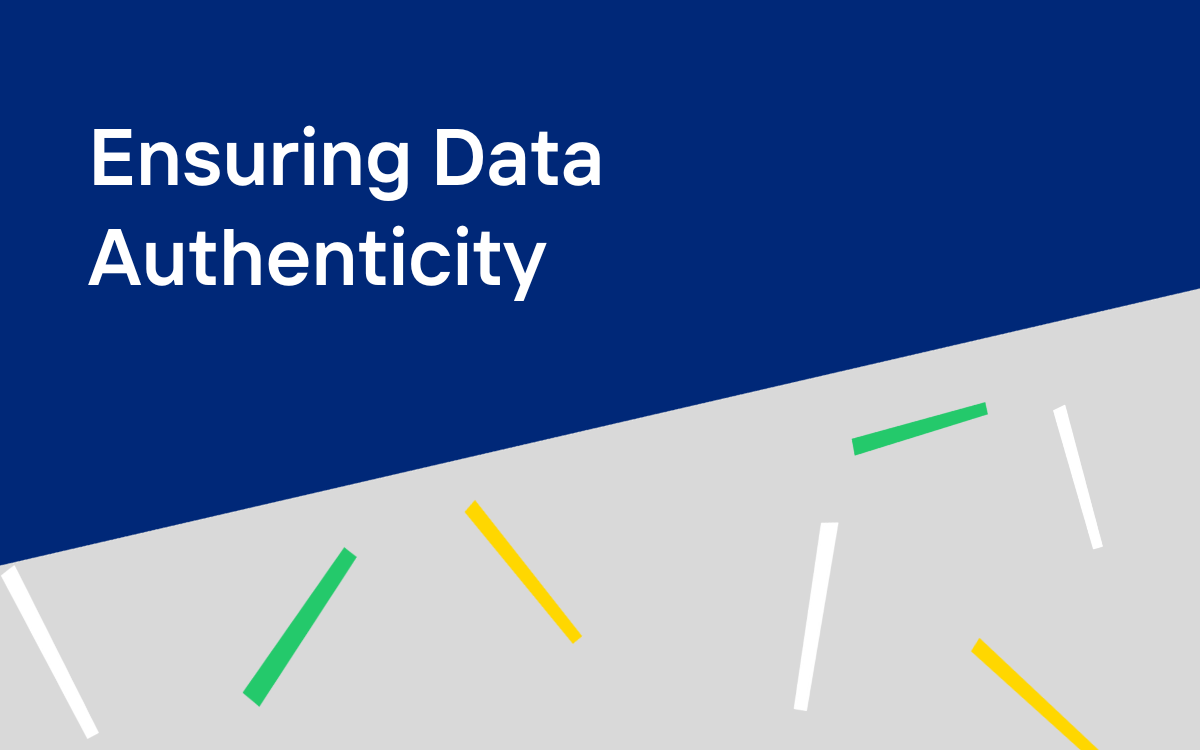Bot management can be challenging for businesses, as bots are looking and acting like humans now more than ever before. They are blending in with traffic and evading traditional bot detection methods at an alarming rate.
Today, we are sharing:
- Who is behind bad bots?
- Why bad bots are so difficult to detect
- What is bot detection? And why is it important?
- How to detect bot traffic and bot attacks
- The benefits of detection for bots
- Some shocking facts about bots
Who is behind bad bots and why is it difficult to detect bot traffic?
It’s important to remember bots are simply a tool used by bad actors to launch attacks at scale. At the end of the attackers are after one thing – money. So they operate as any business would, maximize returns while keeping overhead low. Bots give attackers a highly sophisticated tool that is cheap, easy to use, and highly effective at evading detection. Implementing a modern bot management solution can help undermine the profitability of bot attacks.

What risks come with bad bots?
Bad actors use bots for malicious activities like account takeover, inventory hoarding and pileup, data scraping, and carding. Bot traffic can also cause side effects like slow site speed and increase operational costs.
- Account takeover: Bad bots most commonly exploit stolen credentials to take over accounts.In fact almost half of the login attempts are caused by advanced bots. Attackers can then make fraudulent purchases, steal payment information, or drain saved loyalty points.
- Inventory issues: Scalper bots (a.k.a Sneaker bots) are designed to purchase in-demand items that have limited supply. The bad actors running these bots then resell items at a massive markup. Forcing real customers to pay extremely high prices to the attackers that beat them in the first place. Bots can also be used to pile up inventory, wherein all available stock of a product is added to a cart, but never checked out. Making it appear that an item is out of stock for real customers.
- Fake Account Creation: Bots are used to create accounts that on the surface seem legitimate. Using these accounts adversaries can go on to commit fraud, purchase hype sale products, abuse new account promotions, or spread misinformation.
- Website scraping: Bots are used to scrape the content on your site. With this information competitors can undercut a business’ prices. Scammers also use scrapers to make exact duplicates of a brand’s legitimate site. With these sites they trick customers into buying goods from them, either selling counterfeit goods or stealing payment information when the customer checks out.
- Carding: Bots are used to test stolen credit card information to identify which cards are still authorized to make purchases. This results in fraudulent transactions and chargeback costs while damaging the brand of the merchant.
- Slow site speed and increased costs: Adversaries use a high volume of requests during bot attacks. This increase in traffic takes a heavy toll on site performance negatively impacting customer experience and increasing the costs associated with serving this malicious traffic.
How do bot attacks work?

How bots can attack certain online channels
There is more bot activity now than ever due to there being multiple online channels that are vulnerable to malicious attacks and hacking.
The three main channels that bots attack are:
APIs
APIs have become a favored attack channel, now accounting for 90% of the web app attack surface. 80% or web traffic is made up of APIs, making them a massive target for attackers. Traditional bot detection solutions are also ill equipped to defend APIs as they are slow to update defenses and rely on outdated detection methods like fingerprinting, allowing bots to easily evade detection.
Mobile Application
Mobile apps, while newer than APIs, are increasingly targeted by bots. Malicious bots can operate on mobile just like on desktops, although some human-like behaviors are harder to mimic. Mobile security is often weaker due to user negligence, making apps more vulnerable.
Websites
Attackers commonly deploy bot traffic on websites. Bot traffic on websites varies from login attempts to scraping. Bad actors might try to access someone’s e-commerce account to purchase goods. Or, it might work to scrape the website’s data to mimic it and impersonate the brand elsewhere.
Regardless of the channel, attackers’ main goal is to leverage automation to conduct their attacks at scale in order to earn a profit.
Can malicious actors use fake data to trick bot detection systems?
Faked data is becoming an increasingly popular tactic for bot operators to bypass traditional bot detection solutions. Attackers can even buy harvested digital fingerprints to use during their attacks. Using real human behavior to trick solutions into thinking they are interacting with a real user.
Traditional bot detection is also suffering from the growing trend of internet privacy. As real users mask their true identity, legacy solutions are unable to tell the difference between humans and bots.
A modern approach to bot detection is needed as bots look more like humans and humans look more like bots.
Why you should use modern bot detection?

Without modern bot detection, web applications are at high risk of being attacked by bad actors using malicious automation.
Bot detection tools exist for a good reason, to protect businesses and their customers from the attacks carried out by bad bots.
Stops malicious activities in real-time
Modern bot detection provides a set it and forget it solution, blocking malicious requests from the first page load. By eliminating the need for manual intervention or ongoing maintenance you can ensure you are protected from bad bots 24/7, while also preventing human error from allowing an attack through.
Improve operational costs
An effective bot detection solution can help businesses save both time and money. By removing the need for manual maintenance of traditional solutions you can free up resources and shift budget and employees to other parts of your organization. You can also save on infrastructure costs. Blocking bots that are only looking to attack you will greatly decrease your overall traffic and in turn the costs associated with that traffic.
Boosts business performance
The fact of the matter is businesses need accurate and trustworthy data to make decisions. Bad bots significantly skew data, degrading insights that can be taken from online traffic.
By stopping bots and using bot mitigation tactics, you can improve your data integrity allowing you to track site performance, success of ad campaigns, conversion rates, page engagement, and customers’ journey. Better data can also help allocate resources properly and make important strategic decisions for your business.
Protect your customers
Ultimately your customers are in the crosshairs in the fight between business and bots. While bad actors are targeting companies they are really attacking customers. Trying to break into their accounts, buying goods that they want before they even have a chance, scamming them into thinking they are interacting with a legitimate brand, or testing their stolen credit cards.
It’s important to ensure your customers are not only safe, but have a positive experience with your brand, highlighting the need for modern bot detection. Not only should your anti-bot solution protect users, it should also be seamless to them. Annoying CAPTCHAs only frustrate your real customers and other ineffective solutions let bots in causing your site to slow down due to increased traffic. While slow site speeds and friction causing CAPTCHAs may not hurt customers it can leave them with a bad impression.
How modern bot detection can help different industries
Bot detection is critical for various industries to maintain the integrity, security, and efficiency of their operations. In eCommerce, it prevents fraudulent activities like scalping and fake reviews, which safeguards a fair marketplace for consumers and sellers. For the advertising industry, bot detection ensures that companies are not paying for clicks or views generated by bots, which improves ROI and campaign effectiveness. In the financial sector, bot detection is crucial for preventing fraudulent transactions and protecting user accounts. It also plays a significant role in identifying bots that spread disinformation on social media platforms which can cause potential harm. Bot detection remains a foundational layer of security that has wide-ranging implications across many different industries and sectors.
What is modern bot detection?

Bot detection software identifies and blocks harmful bot traffic, enhancing online business security. Using bot management solutions, you can identify advanced bots and stop them from doing damage. Through using a modern bot management solution, you can detect the presence of automation. Allowing you to prevent bad actors from launching their attacks at scale.
Traditional bot management uses strategies like whitelisting, honeypots, behavioral analysis and CAPTCHAs to identify and block harmful bots, no longer work. Bots have become increasingly sophisticated and can easily evade outdated detection methods. While finding a solution that can remain effective in the face of evolving automated threats is difficult, it is crucial to protect both your business and customers.
How does modern bot detection work?
Bot detection analyzes web traffic to distinguish between human and bot traffic. Not all bot detection is the same. While others let all traffic in before determining what traffic is human vs. bot, Kasada offers a real-time, proactive solution that assumes every request is potentially malicious until proven otherwise.
What sets Kasada apart from many outdated solutions today is that we make bots do the work rather than humans. We don’t use inconvenient and ineffective CAPTCHA, which can frustrate legitimate users. Instead, we use invisible and dynamic sensors paired with highly obfuscated defenses to make it expensive and arduous for bots to continue their attacks.
Let’s take a look at how Kasada’s bot detection solution works in further detail:
Dynamic detections
Kasada’s dynamic detections leverage both client-side and server-side detection to identify and block bad bots before they can enter your online channels.
Client-side
- Invisible signal collection: Hundreds of sophisticated sensors collect hidden traces of automation within the client. Detects bots from the first request, without interrupting your real users or letting malicious requests hit your backend.
- Proof of Execution: Dynamic code paths executed within a highly obfuscated virtual machine force attackers to run their code in real browsers and mobile devices. This secures the signal data extracted from the client, making it hard to fake.
Server-side
- Client Validation: Data received from the client is checked for signs of automation and assessed for tampering. Enables trustworthy decision-making using high integrity data from the client, while detecting attempts to bypass detection.
- Fast Anomaly Detection: Analytical models based on trillions of bot interactions identify automated session behavior in less than 2ms. Reduces the window of attack, forcing adversaries to re-validate their session.
Rapid Feedback
Kasada’s analysis of the trillions of bots our system interacts with across our customers and the actionable threat intelligence discovered by our team are rapidly fed back into our defenses. Allowing us to keep pace with bot innovations.
- Data Analytics: The product’s live data is fed into an analysis system, which discovers and enables investigation of real-time attempts to bypass detection.
- Threat Intelligence: Information is extracted from the botting community and the attack tools they build. Future attack methods are anticipated and used to bolster our defenses. New invisible sensors are added client-side in minutes across our entire customer base.
Ready to Get Started with Bot Detection?
We hope our comprehensive guide has helped you understand who is behind bad bots. As you can see, bots pose threats from all angles, so it is vital to use modern bot detection tools and bot management solutions to ensure your protection. Good bot detection and management can spot bots early and deter them from coming back without the need for manual maintenance.
Why not run our instant bot detection free assessment now to see if your website can detect bots? Or, if you have any queries, please do not hesitate to get in touch for more information. Let’s get started with bot detection!





